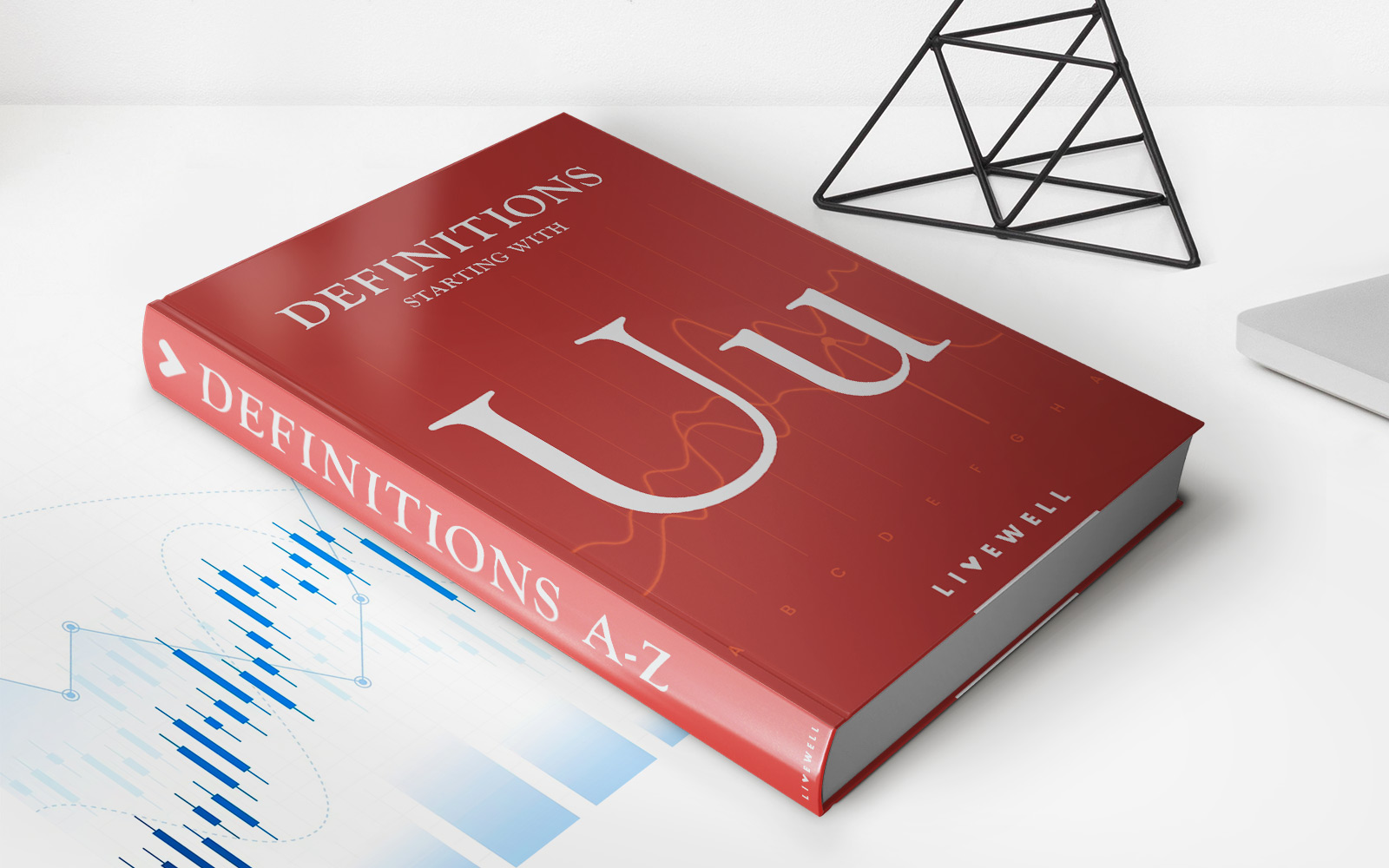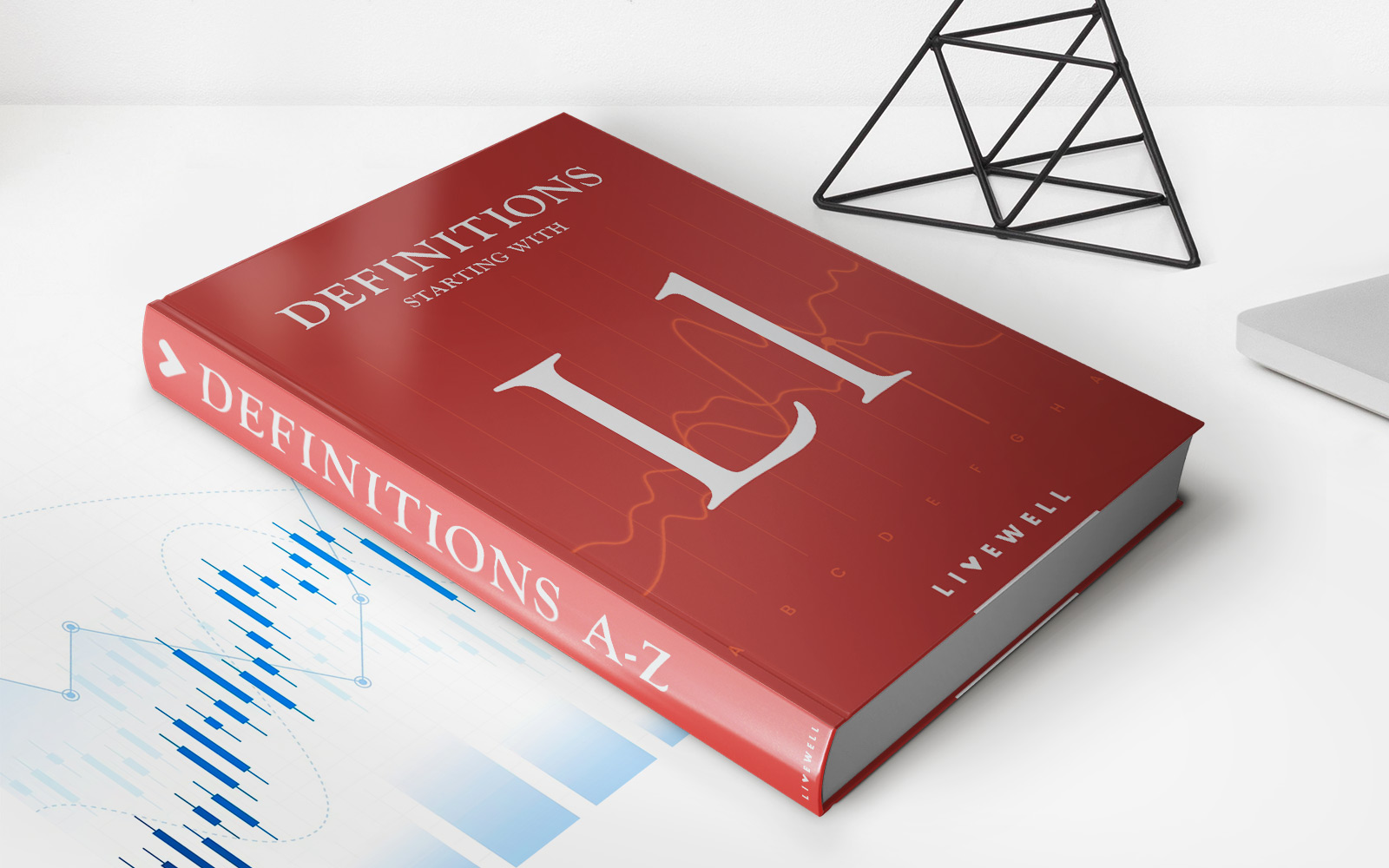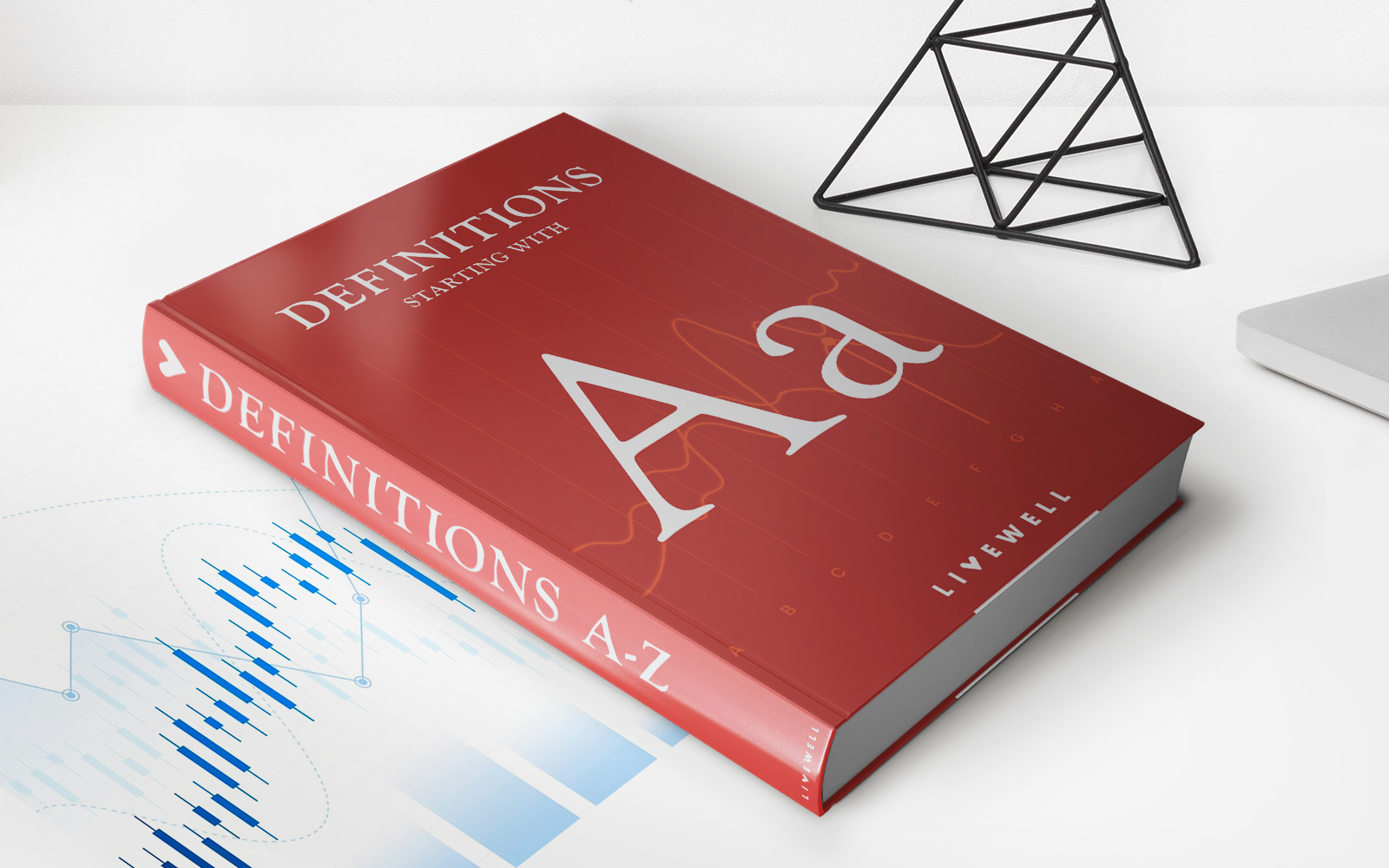

Finance
Convertible Securities: What Are They?
Modified: February 21, 2024
Learn all about convertible securities in the world of finance, including their features, benefits, and how they work.
(Many of the links in this article redirect to a specific reviewed product. Your purchase of these products through affiliate links helps to generate commission for LiveWell, at no extra cost. Learn more)
Table of Contents
- What Are Convertible Securities?
- Advantages of Convertible Securities
- Disadvantages of Convertible Securities
- Common Types of Convertible Securities
- How Convertible Securities Work
- Key Features and Terms of Convertible Securities
- Factors to Consider Before Investing in Convertible Securities
- Convertible Securities vs. Traditional Debt and Equity
- Examples of Successful Convertible Securities Offerings
- Risks Associated with Convertible Securities
- Conclusion
What Are Convertible Securities?
Convertible securities are financial instruments that combine features of both debt and equity. These securities, typically issued by companies, give investors the option to convert their ownership into a predetermined number of shares of common stock. This hybrid nature allows investors to benefit from potential stock price appreciation while still having the security of fixed-income instruments.
Convertible securities can take different forms, such as convertible bonds, convertible preferred stock, or convertible notes. The terms of the conversion, including the conversion price and conversion ratio, are outlined in the security’s prospectus.
The main appeal of investing in convertible securities lies in the potential for capital appreciation as the underlying company’s stock value increases. If the stock price rises above the conversion price, investors can convert their securities into shares, allowing them to participate in the company’s growth. Conversely, if the stock price does not perform well, investors can still benefit from the fixed income portion of the security.
Convertible securities also offer companies the advantage of raising capital at a lower cost compared to traditional debt or equity offerings. By offering a combination of fixed income and potential stock conversion, companies can attract investors seeking diversification and potential upside.
These securities are typically more common among companies in industries with high growth potential or uncertain valuations. Technology startups, biotech firms, and companies in other fast-growing sectors often rely on convertible securities to attract investor interest while mitigating the perceived risk associated with their early-stage ventures.
Overall, convertible securities provide a flexible and attractive investment option for both investors and companies. Investors can potentially benefit from stock price appreciation while still receiving a fixed income component, and companies can raise capital at a lower cost and attract a broader range of investors.
Advantages of Convertible Securities
Convertible securities offer several advantages to both investors and issuers:
- Potential for Capital Appreciation: One of the key benefits of investing in convertible securities is the opportunity for capital appreciation. If the underlying company’s stock price rises, investors have the option to convert their securities into shares, allowing them to benefit from the stock’s upward movement. This potential for increased returns attracts investors looking for growth opportunities.
- Income Generation: Convertible securities typically offer a fixed income component in the form of coupon payments. This fixed income stream provides investors with regular interest payments, similar to traditional bonds. If the underlying stock performs poorly, investors can still earn income from the fixed interest payments.
- Risk Mitigation: The hybrid nature of convertible securities allows investors to mitigate risk. If the underlying stock performs poorly, investors retain the fixed income portion, reducing the potential downside compared to holding common shares or traditional equity investments. This risk mitigation feature makes convertible securities an attractive investment option for risk-averse investors.
- Liquidity: Convertible securities are often listed on major exchanges, increasing their liquidity. This means investors can easily buy or sell their securities on the open market, providing them with flexibility and the ability to adjust their investment portfolio as needed.
- Attractive Financing Option: For issuers, convertible securities provide an attractive financing option. Companies can raise capital at a lower cost compared to traditional equity offerings since the fixed income component reduces the risk for investors. This cost advantage makes convertible securities an appealing choice for companies looking to raise funds for expansion or other strategic initiatives.
Overall, convertible securities offer a unique blend of potential growth through stock conversion and stability through fixed income. They provide investors with the opportunity to benefit from the upside of the underlying company’s stock while still having a safety net in the form of regular interest payments. For issuers, convertible securities offer a cost-effective means of raising capital. The flexibility, risk mitigation, and attractive returns make convertible securities a valuable investment option for both individuals and companies in the financial market.
Disadvantages of Convertible Securities
While convertible securities offer several advantages, they are not without their drawbacks. It is important for investors to consider the following disadvantages:
- Lower Income Potential: Compared to traditional equity investments, convertible securities typically offer lower potential returns. The fixed income component of these securities reduces the overall income potential, as investors may sacrifice higher yields in exchange for the conversion option.
- Conversion Risk: The conversion feature of convertible securities comes with its own risks. If the stock price fails to reach or surpass the predetermined conversion price, investors may not be able to benefit from the potential stock appreciation. They will be limited to receiving only the fixed income component of the security, missing out on potential gains from owning common stock directly.
- Market Volatility: Like any investment tied to the stock market, convertible securities are subject to market fluctuations. If the stock price of the underlying company experiences significant volatility, it can impact the value of the convertible security. Investors may face a higher risk of loss if the market becomes more volatile.
- Interest Rate Sensitivity: Convertible securities are influenced by changes in interest rates. When interest rates rise, the fixed income component of the security may become less attractive compared to other fixed-income options available in the market. This can lead to a decline in the overall value of the convertible security.
- Complexity: Understanding the terms and conditions of convertible securities can be complex for some investors. The conversion ratio, conversion price, and other factors outlined in the security’s prospectus may require a deeper understanding of financial concepts. As a result, investors may need to dedicate additional time and effort to fully comprehend the intricacies of convertible securities.
It is essential for investors to carefully assess these drawbacks and evaluate whether the potential benefits of convertible securities outweigh the disadvantages. Conducting thorough research, consulting with financial professionals, and considering one’s risk tolerance and investment goals can help investors make informed decisions when incorporating convertible securities into their portfolio.
Common Types of Convertible Securities
Convertible securities come in various forms, each with its own unique characteristics. The most common types of convertible securities include:
- Convertible Bonds: Convertible bonds are debt securities that can be converted into a specific number of common stock shares of the issuing company. These bonds often pay fixed interest to investors until maturity and provide them with the option to convert their bonds into equity. Convertible bonds are popular among companies seeking to raise capital while offering investors the potential for stock appreciation.
- Convertible Preferred Stock: Convertible preferred stock is a type of equity that offers investors a fixed dividend payment and the option to convert their shares into common stock at a specific conversion ratio. This type of security is popular among investors who want the stability of preferred stock while having the opportunity to benefit from potential stock price appreciation.
- Convertible Notes: Convertible notes are a form of debt that can be converted into equity shares at a later date. These securities usually have a fixed term and interest rate, similar to traditional bonds, and provide investors with the option to convert their notes into equity once certain conditions are met, such as a specific stock price or a particular event taking place.
- Convertible Preferred Units: Convertible preferred units are a type of security often found in real estate investment trusts (REITs) and other partnerships. They combine the features of convertible debt and preferred equity, providing investors with the opportunity to convert their units into common shares or cash at a predetermined rate.
These are just a few examples of the common types of convertible securities available in the market. Each type has its own specific terms, conditions, and conversion features, which can vary depending on the issuing company and market conditions.
Investors considering convertible securities should carefully review the terms and prospectus of each security to understand the specific features and conversion mechanics before making an investment decision. Understanding the differences between these types of convertible securities enables investors to tailor their investment strategies to their specific goals and risk appetite.
How Convertible Securities Work
Convertible securities are unique financial instruments that combine features of both debt and equity. Here’s a breakdown of how they work:
- Issuance: Companies issue convertible securities to raise capital. Investors purchase these securities, which can come in the form of convertible bonds, convertible preferred stock, or convertible notes.
- Conversion Option: The key feature of convertible securities is the conversion option. This allows investors to convert their securities into a predetermined number of shares of the company’s common stock. The conversion is usually voluntary and can occur at a specified conversion price or conversion ratio, which determines the number of shares received for each convertible security.
- Conversion Trigger: The conversion feature is typically triggered by certain events. These events may include the passage of a specified time period, a specific stock price reaching a predetermined threshold, or a corporate event such as a merger or acquisition.
- Interest or Dividend Payments: While convertible securities provide investors with the opportunity for stock conversion, they also offer fixed income payments. Convertible bonds, for example, usually pay interest to bondholders at regular intervals, while convertible preferred stock may pay dividends to shareholders. These fixed income payments provide income to investors even if the stock price does not perform well.
- Flexibility: Convertible securities offer flexibility for both investors and companies. Investors have the choice to either keep their securities until maturity and receive their fixed income payments or convert them into common stock. As for companies, the convertible feature allows them to attract investors seeking both income and potential stock appreciation.
- Liquidity: Convertible securities are often listed on major exchanges, making them relatively liquid investments. Investors can buy or sell these securities on the secondary market, providing liquidity and the ability to adjust their investment portfolio as needed.
- Overall Value: The value of convertible securities is influenced by several factors, including the price and volatility of the underlying common stock, interest rates, and time to maturity. As the stock price of the company rises or falls, the value of the convertible security will also adjust accordingly.
It is important for investors to carefully review the terms and conditions of each convertible security they consider. Understanding the conversion mechanics, triggers, and interest or dividend payments allows investors to make informed decisions and tailor their investment strategies accordingly.
Key Features and Terms of Convertible Securities
Convertible securities have key features and terms that investors should be familiar with before investing. Understanding these features and terms helps investors assess the potential risks and rewards associated with these securities. Here are the key elements:
- Conversion Price: The conversion price is the predetermined price at which the convertible security can be converted into shares of common stock. It is usually set at a premium to the current stock price to provide an incentive for investors to convert their securities.
- Conversion Ratio: The conversion ratio determines the number of shares of common stock that investors will receive upon conversion of their convertible securities. It is calculated by dividing the par value or face value of the convertible security by the conversion price.
- Conversion Period: The conversion period is the timeframe during which investors can exercise their conversion option. This period is typically specified in the terms of the convertible security and can vary from several months to several years.
- Interest or Dividend Rate: Convertible securities often provide a fixed income component in the form of interest payments for convertible bonds or dividend payments for convertible preferred stock. The interest or dividend rate is determined at the time of issuance and is paid to investors at regular intervals.
- Maturity Date: Convertible securities have a maturity date, which marks the end of the security’s term. Upon maturity, investors have the option to convert their securities into common stock or choose to receive the principal amount of the security.
- Call and Put Provision: Some convertible securities may have call and put provisions. A call provision gives the issuing company the option to redeem the securities before the maturity date, while a put provision gives the investor the right to sell the securities back to the issuer before maturity.
- Market Conditions: The value of convertible securities is influenced by various market conditions, such as the prevailing interest rates, stock market performance, and volatility. Changes in these market conditions can impact the attractiveness and value of convertible securities.
It is important for investors to carefully review the prospectus and terms of convertible securities to understand these key features and terms. The specific terms of each security can vary, so conducting thorough due diligence and consulting with financial professionals is crucial in making informed investment decisions.
Factors to Consider Before Investing in Convertible Securities
Before investing in convertible securities, it is important to consider several factors to assess whether they align with your investment goals and risk tolerance. Here are some key factors to evaluate:
- Conversion Potential: Evaluate the potential for stock price appreciation. Assess the underlying company’s growth prospects, industry positioning, and overall market conditions to determine if there is a likelihood of the stock price reaching the conversion price. A higher potential for stock price appreciation increases the attractiveness of convertible securities.
- Risk-Return Profile: Consider the risk-return profile of convertible securities. While they offer potential benefits such as capital appreciation and fixed income, they also come with risks. Evaluate your risk tolerance and determine if the potential returns outweigh the associated risks.
- Interest or Dividend Payments: Examine the interest or dividend payments offered by the convertible securities. Evaluate the rate of return on the fixed income component and compare it to similar fixed-income investments. Assess if the income generated is sufficient and aligns with your investment objectives.
- Conversion Terms: Pay attention to the conversion terms, including the conversion price, conversion ratio, and conversion period. Analyze whether these terms are favorable and provide a reasonable opportunity for conversion into common stock at a desirable price.
- Company Fundamentals: Evaluate the financial health and fundamentals of the issuing company. Examine factors such as revenue growth, profitability, debt levels, and cash flow. A strong and stable company with positive financial indicators may increase the potential for convertible securities to perform well.
- Market Conditions: Consider the current interest rate environment, stock market performance, and volatility. Changes in market conditions can impact the value of convertible securities. Assess how these factors might influence the overall attractiveness and risks associated with investing in convertible securities.
- Liquidity: Assess the liquidity of the convertible securities. Determine if there is an active secondary market where you can easily buy or sell your securities if needed. Higher liquidity provides flexibility and the ability to adjust your investment portfolio as circumstances change.
- Diversification: Consider the impact of adding convertible securities to your portfolio. Assess how they fit within your overall investment strategy and whether they provide diversification benefits. Evaluate how they correlate with other assets in your portfolio to manage risk effectively.
These factors should be carefully analyzed in conjunction with your investment goals, time horizon, and risk tolerance. It is recommended to consult with financial professionals who can provide guidance tailored to your specific circumstances and help you make informed decisions when considering investing in convertible securities.
Convertible Securities vs. Traditional Debt and Equity
When considering investment options, it is essential to understand the differences between convertible securities, traditional debt, and equity. Here’s a comparison between these types of investments:
- Return Potential: Convertible securities offer the potential for both fixed income and capital appreciation. They provide the option to convert into common stock, allowing investors to benefit from stock price appreciation. Traditional debt investments, such as bonds, offer fixed income payments but do not provide an opportunity for equity participation. Equity investments offer the potential for greater returns, as investors can benefit from a company’s growth, but do not offer fixed income payments.
- Risk and Stability: Convertible securities, with their fixed income component, provide some stability and downside protection. If the stock price does not perform well, investors can still rely on fixed income payments. Traditional debt investments generally offer more stability than equity, as they prioritize debt repayment. Equity investments have higher risk and volatility, as their returns are directly tied to the success of the underlying company.
- Flexibility: Convertible securities offer investors flexibility in terms of their investment strategy. They can choose to hold the security for fixed income returns or convert it into equity if the stock price performs well. Traditional debt investments have a fixed maturity date, and equity investments represent ownership stakes in the company, limiting flexibility in terms of exit strategies.
- Interest Payments: Convertible securities, such as convertible bonds or convertible preferred stock, offer fixed interest or dividend payments to investors, similar to traditional debt investments. In contrast, equity investments do not provide a fixed income component. Dividends for common stock are discretionary and can fluctuate based on the company’s financial performance.
- Capital Structure: Convertible securities are considered a hybrid form of financing, sitting between debt and equity in a company’s capital structure. They are classified as debt until conversion, when they become equity. Traditional debt investments, such as bonds, are solely considered debt, while equity investments represent ownership stakes in the company.
- Issuer Perspective: From the issuer’s point of view, convertible securities provide an attractive means of raising capital. They offer the flexibility of debt with the potential upside of equity, making them appealing to companies seeking funding while minimizing the potential dilution to existing shareholders. Traditional debt and equity offerings have their own advantages and considerations in terms of cost, interest payments, and shareholder dilution.
It is important to evaluate your investment objectives, risk tolerance, and desired returns when considering convertible securities versus traditional debt or equity. Each type of investment has its own trade-offs and considerations. Working with a financial advisor can help you navigate these options and determine the most suitable investment mix for your specific needs and goals.
Examples of Successful Convertible Securities Offerings
Convertible securities have been utilized by many companies to raise capital successfully. Here are a few examples of notable convertible securities offerings:
- Tesla’s Convertible Bonds: In 2014, Tesla, the electric vehicle manufacturer, issued $2.3 billion worth of convertible bonds. These bonds offered a 0.25% interest rate and a conversion price premium of 42.5% above the market price at the time. The offering attracted significant investor interest, allowing Tesla to raise capital while minimizing dilution to existing shareholders. As Tesla’s stock price soared in subsequent years, many bondholders chose to convert their bonds into equity, benefiting from the substantial increase in Tesla’s stock value.
- Netflix’s Convertible Notes: In 2019, streaming giant Netflix issued $2.2 billion in convertible notes to fund original content production and strengthen its balance sheet. The notes carried a 1.375% interest rate and had a conversion premium of approximately 37.5% above the reference price. This successful offering provided Netflix with additional capital while offering investors the potential for stock price appreciation. With the rapid growth of the streaming industry, the conversion feature of these notes became attractive to investors as the company’s stock price rose.
- Zoom’s Convertible Bond Offering: In 2020, video conferencing platform Zoom issued $1.5 billion worth of convertible bonds. The bonds had a 0.25% interest rate and a conversion premium of around 60% above the reference price. This offering allowed Zoom to raise funds to support its growth during the COVID-19 pandemic. As stay-at-home measures drove increased demand for remote collaboration tools, Zoom’s stock price soared, creating an opportunity for bondholders to convert their bonds into equity and participate in the company’s success.
- Virgin Galactic’s Convertible Preferred Stock: In 2020, space tourism company Virgin Galactic issued $460 million in convertible preferred stock. The stock had a dividend of 7% and a conversion premium of approximately 20% above the reference price. This offering provided Virgin Galactic with the necessary funds to expand its operations and advance its spaceflight program. The conversion option allowed investors to potentially benefit from the future growth of the space tourism industry as well as the success of Virgin Galactic’s spaceflights and related ventures.
These are just a few examples of successful convertible securities offerings that have generated interest from investors and provided companies with capital for growth and expansion. These offerings highlight how convertible securities can be an attractive financing option for companies in various industries, providing them with the flexibility to raise funds while offering investors the potential for capital appreciation and fixed income.
Risks Associated with Convertible Securities
While convertible securities offer potential benefits, they also come with certain risks that investors should be aware of. Evaluating these risks is crucial for making informed investment decisions. Here are some key risks associated with convertible securities:
- Conversion Risk: There is a risk that the stock price of the underlying company may not reach or exceed the conversion price during the conversion period. If this happens, investors will not realize the potential stock appreciation and will be limited to receiving only the fixed income component of the security.
- Market Risk: Convertible securities are influenced by overall market conditions. Changes in interest rates, stock market volatility, or economic uncertainties can impact the value of these securities. Investors may experience losses if the market experiences significant downturns during the holding period of the convertible securities.
- Liquidity Risk: While convertible securities are generally listed on major exchanges, it is possible that a lack of trading activity or a limited number of interested buyers may affect the liquidity of these securities. If investors need to sell their securities quickly, they may face challenges in finding willing buyers at desired prices.
- Interest Rate Sensitivity: Convertible securities are sensitive to changes in interest rates. If interest rates rise, the value of the fixed income component of the security may decrease, making it less attractive compared to other fixed-income investments. This can result in a decline in the overall value of the convertible security.
- Default Risk: There is a risk of default if the issuing company fails to make interest payments or redeem the convertible securities at maturity. While the fixed income component of convertible securities offers some protection, investors should assess the creditworthiness and financial health of the issuing company to minimize the risk of default.
- Company-Specific Risks: The performance of convertible securities is tied to the underlying company. Factors such as poor financial health, management issues, or industry challenges can negatively impact the value of the securities. Investors should conduct thorough research on the issuing company to understand its fundamentals and assess the associated risks.
It is essential for investors to carefully evaluate the risks involved in convertible securities and assess them in the context of their own investment objectives and risk tolerance. Diversification, thorough due diligence, and consulting with financial professionals can help investors manage and mitigate these risks effectively.
Conclusion
Convertible securities offer a unique investment opportunity, combining the characteristics of both debt and equity. These hybrid instruments allow investors to benefit from potential stock price appreciation while having the security of fixed income payments. Companies issuing convertible securities can raise capital at a lower cost and attract a broader range of investors.
While convertible securities offer advantages such as capital appreciation potential, income generation, and risk mitigation, they also come with certain considerations. Investors need to carefully assess factors such as conversion potential, risk-return profile, interest or dividend payments, conversion terms, market conditions, liquidity, and company fundamentals before investing. Understanding the key features and terms of convertible securities is crucial to make informed investment decisions.
Convertible securities have been successfully utilized by companies across various industries to raise capital. Notable examples include Tesla, Netflix, Zoom, and Virgin Galactic, which attracted investor interest and provided companies with the necessary funds for growth and expansion.
However, it is important for investors to be aware of the risks associated with convertible securities, such as conversion risk, market risk, liquidity risk, interest rate sensitivity, default risk, and company-specific risks. Thorough research, diversification, and consultation with financial professionals can help manage and mitigate these risks.
In conclusion, convertible securities offer an investment option that combines elements of fixed income and potential equity participation. By carefully evaluating the advantages, disadvantages, and risks associated with these securities, investors can make informed decisions that align with their investment goals and risk tolerance.














